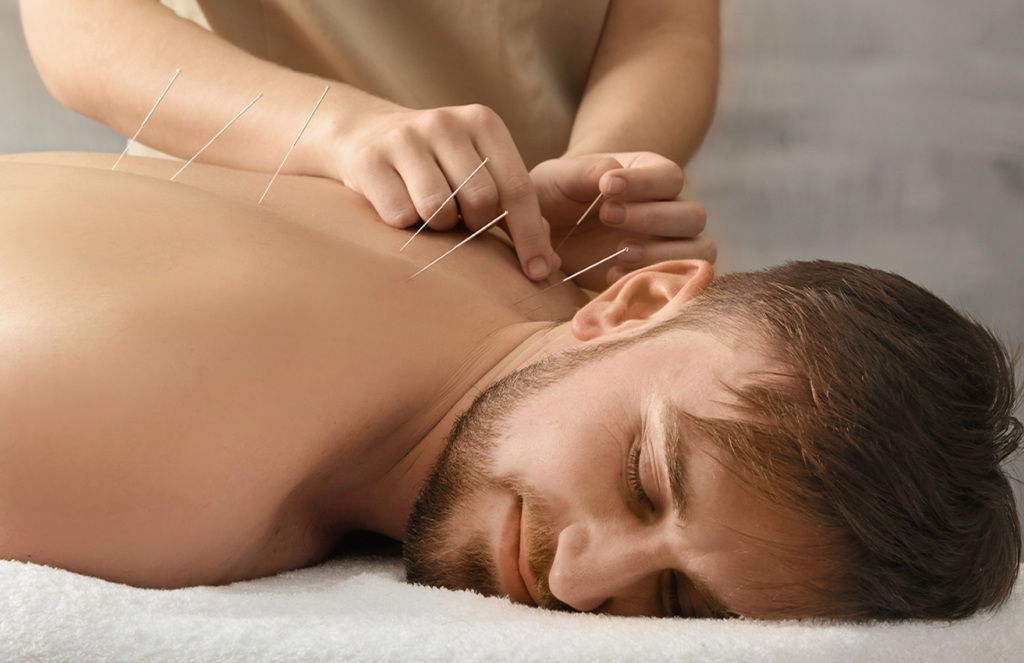Coping with chronic pain presents physical and emotional hurdles, often necessitating a comprehensive approach to pain relief.
While conventional treatments like medication, physical therapy, and surgery are standard, some individuals explore alternative or complementary therapies.
This article delves into several unconventional treatments people employ for pain management, shedding light on their potential advantages and considerations.
Acupuncture

Acupuncture, originating from ancient Chinese medicine, entails inserting fine needles into designated points on the body to enhance energy flow and facilitate healing.
Though its exact mechanism remains unclear, acupuncture purportedly prompts the release of endorphins, the body’s innate pain alleviators.
Evidence indicates its potential efficacy in alleviating diverse pain types like chronic back pain, arthritis, and migraines. Nonetheless, responses to acupuncture are individualized, and additional research is warranted to validate its effectiveness conclusively.
Floatation Therapy
Floatation therapy, alternatively termed sensory deprivation or float therapy, encompasses reclining in a tank filled with warm water and Epsom salt. The water’s buoyancy facilitates effortless floating, easing strain on joints and muscles while inducing profound relaxation.
Advocates assert that floatation therapy can diminish pain, mitigate stress, and enhance sleep quality. While empirical backing is scant, numerous individuals perceive floatation therapy as a calming and beneficial practice.
Music Therapy
Music therapy taps into music’s therapeutic potential to enhance physical and emotional wellness.
Accredited music therapists employ diverse methods like listening to music, engaging in singing, playing instruments, and composing songs to aid individuals in pain management and elevate their general well-being.
Music has demonstrated efficacy in mitigating stress, anxiety, and pain sensation by triggering the release of endorphins and inducing a state of relaxation.
Furthermore, music therapy serves as a creative avenue for self-expression and emotional exploration, furnishing comprehensive support to those grappling with chronic pain.
Stem Cell Therapy

Stem cell therapy at clinics like Bioxcellerator represents a groundbreaking treatment method leveraging stem cells to mend injured tissues and alleviate inflammation linked to chronic pain disorders.
Stem cells are capable of transforming into diverse cell types and fostering tissue rejuvenation, rendering them auspicious contenders for pain mitigation.
Although investigations into stem cell therapy’s efficacy in pain alleviation are nascent, initial studies demonstrate encouraging outcomes for ailments like osteoarthritis, neuropathic pain, and spinal cord injury.
Biofeedback
Biofeedback is a mind-body technique that teaches individuals to control physiological processes such as heart rate, muscle tension, and skin temperature through conscious awareness and mental exercises.
During a biofeedback session, sensors are attached to the body to monitor these physiological responses, which are then displayed on a computer screen in real-time.
Individuals learn to modify their body’s responses to stress and pain through relaxation techniques, breathing exercises, and guided imagery, leading to improved symptom management and overall well-being.
Conclusion
While conventional treatments remain the cornerstone of pain management, unconventional therapies can offer additional options for individuals seeking alternative approaches to coping with pain.
It’s essential to approach these treatments with an open mind and consult with healthcare professionals to ensure their safety and suitability for your specific condition.
By exploring unconventional pain management techniques, individuals may discover new avenues for relief and enhance their overall quality of life.

Jean Smith is a fitness enthusiast and blogger who focuses on fitness and a healthy lifestyle. She is passionate about assisting people in living healthier lifestyles and is constantly on the lookout for new and creative methods to stay fit and healthy. Her articles are excellent resources for anyone interested in improving their health and fitness.
